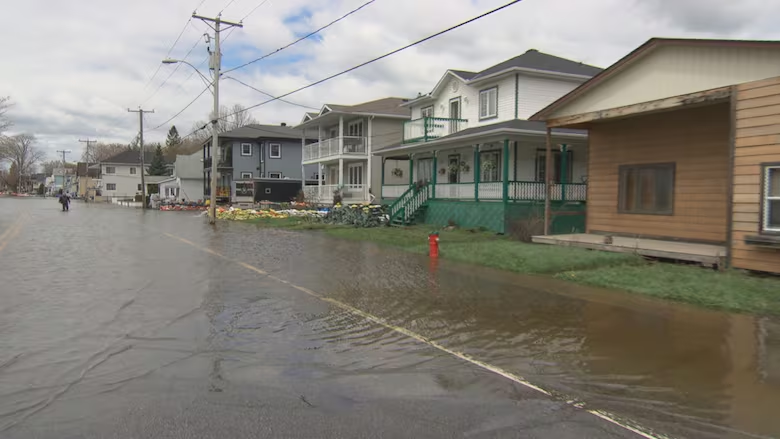Floating houses? UW conference shares flooding strategies
Amphibious architecture makes it possible for a house to float when flooding occurs

Imagine being able to avoid flood damage to your home by having it float on water.
An international conference held at St. Jerome's University on the University of Waterloo main campus this week is looking at just that.
- Rising waters leaves residents stranded in Grand Valley
- Why flooding has been such a problem in Ontario this week
The International Conference on Amphibious Architecture, Design and Engineering (ICAADE) is having its second annual conference bringing academics, professionals and policymakers to share ideas and knowledge on amphibious architecture as extreme weather and climate change threaten to generate more flooding around the world.
What is amphibious architecture?
Amphibious architecture refers to a system that would make it possible for a house to float on water in order to avoid serious flood damage.
This technique is ideal in regions where flooding is expected to increase.
"The house rises up on top of the flood water temporarily," Elizabeth English, chair of the ICAADE conference and an associate professor at UW School of Architecture, told CBC's The Morning Edition host Craig Norris on Tuesday.
"As the water recedes, the house goes back down to its original resting place."
She explained that a house can be built or retrofitted so that it has buoyancy underneath while using a vertical guidance system to allow the house to float as high as necessary when flooding happens.
Buoyancy can be created from many things, such as large blocks of coated, expanded polystyrene (styrofoam), to manufactured dock floats, said English. In other parts of the world, empty barrels or even recycled water bottles have been used.
"Anything that will displace water can be used for buoyancy," she said.
Ideal candidates
It is possible to retrofit traditionally-constructed houses that have basements. However, the home would require a more extensive retrofit than homes without basements.
"It is possible to retrofit a basement, but that's another set of techniques," said English.
Cottages and houses already on elevated platforms or short stilts with crawl spaces underneath, such as in many Indigenous communities, are good candidates for amphibious construction, said English.
"There was bad flooding in Toronto in Ward's Island a few weeks ago and many of those houses are without basements. They would be good candidates for this technique," she said.